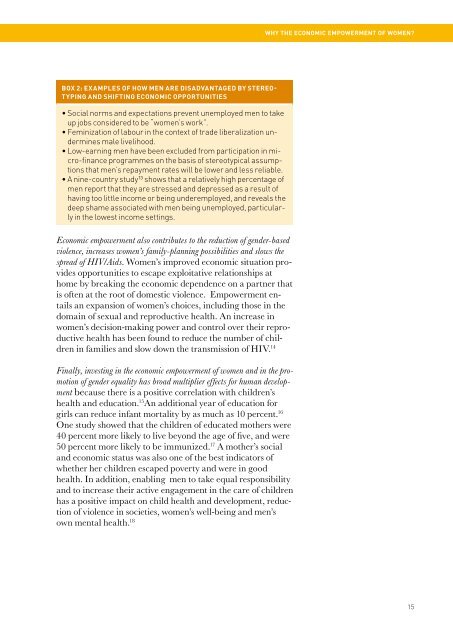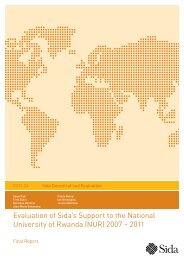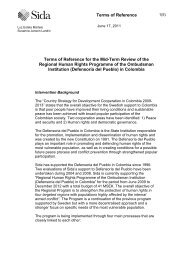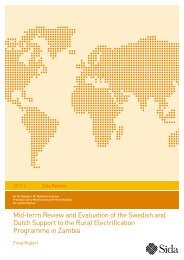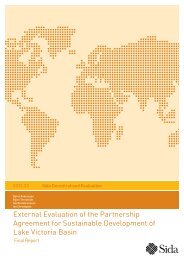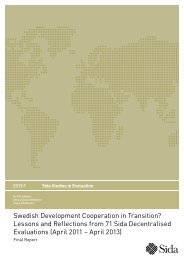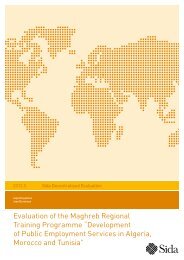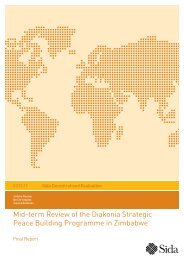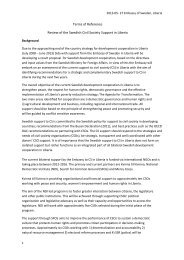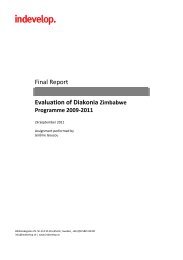Women's Economic Empowerment: Scope for Sida's Engagement
Women's Economic Empowerment: Scope for Sida's Engagement
Women's Economic Empowerment: Scope for Sida's Engagement
You also want an ePaper? Increase the reach of your titles
YUMPU automatically turns print PDFs into web optimized ePapers that Google loves.
WHY THE ECONOMIC EMPOWERMENT OF WOMEN?Box 2: Examples of how men are disadvantaged by stereotypingand shifting economic opportunities• Social norms and expectations prevent unemployed men to takeup jobs considered to be “women’s work”.• Feminization of labour in the context of trade liberalization underminesmale livelihood.• Low-earning men have been excluded from participation in micro-financeprogrammes on the basis of stereotypical assumptionsthat men’s repayment rates will be lower and less reliable.• A nine-country study 13 shows that a relatively high percentage ofmen report that they are stressed and depressed as a result ofhaving too little income or being underemployed, and reveals thedeep shame associated with men being unemployed, particularlyin the lowest income settings.<strong>Economic</strong> empowerment also contributes to the reduction of gender-basedviolence, increases women’s family-planning possibilities and slows thespread of HIV/Aids. Women’s improved economic situation providesopportunities to escape exploitative relationships athome by breaking the economic dependence on a partner thatis often at the root of domestic violence. <strong>Empowerment</strong> entailsan expansion of women’s choices, including those in thedomain of sexual and reproductive health. An increase inwomen’s decision-making power and control over their reproductivehealth has been found to reduce the number of childrenin families and slow down the transmission of HIV. 14Finally, investing in the economic empowerment of women and in the promotionof gender equality has broad multiplier effects <strong>for</strong> human developmentbecause there is a positive correlation with children’shealth and education. 15 An additional year of education <strong>for</strong>girls can reduce infant mortality by as much as 10 percent. 16One study showed that the children of educated mothers were40 percent more likely to live beyond the age of five, and were50 percent more likely to be immunized. 17 A mother’s socialand economic status was also one of the best indicators ofwhether her children escaped poverty and were in goodhealth. In addition, enabling men to take equal responsibilityand to increase their active engagement in the care of childrenhas a positive impact on child health and development, reductionof violence in societies, women’s well-being and men’sown mental health. 1815


